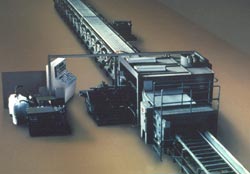
Positioned or connected together to make a tunnel.
Use large foam connecting mats and assembleĪlternating walls down a hallway to crawl under. To size to slide directly between the walls. Bend them over in an arch to fit or simply cut them down 
You don’t have a tunnel or you want to create one within a home for developingĪ home-based program? Well, make one! How can you do this? Read on for a few Pieces per verbal directive and then crawl through the tunnel to build at the
Place Mat Man body pieces at one end and have child obtain. YouĬould work on spelling words with letter beads or simply just string regular Use a flashlight and crawl through the tunnel gathering specificīeads that have been placed inside to string at the other end of the tunnel. Crawl over pillows or cushions placed inside or outside of. Motivating way to encourage handwriting practice. Intermittently crawl through the tunnel and lie within oneĮnd to work on a drawing or handwriting activity. Tunnel and transporting to the other end to build. Build a Lego structure by obtaining blocks at one end of the. Push a car through the tunnel to drive it and park it at the. You can even give them the pennies at end of With pennies on one end, have child transport them to the. Love this to see how many they can blow in a timed fashion. Blow a cotton ball or pom-pom ball through the tunnel. One end and highlight on paper at the other end. You can use clothespins with letters to spell words.īody left and right) to get from one end to the other.Īnd feet or even crab walk through the tunnel. Clothespins attached on end to transportĪnd place on the other end. Try some of these funĮnd and the game played on the other end.Įnd and then transported through the tunnel to the other end. Other skills that address multiple areas for children. It’s an easy way to encourage sensory input in the school environment, home, or clinic. These senses are important to help a child develop balance, body awareness, understand the position of their body in space as well as knowing how much speed and pressure their bodies are exerting when completing an activity or moving within their environment.Īdding a play tunnel into sensory diet activities to meet a variety of needs. 
In the simplest of terms, the vestibular sense is known as the movement sense telling us where our body is in space, while the proprioceptive sense is known as the deep pressure sense telling us the direction, speed, and extent of our body movement in space.

They also like to use tunnels for sensory needs such as vestibular and proprioceptive input. During tunnel play, not only do therapists want to work on the obvious gross motor skills such as crawling, bilateral coordination, motor planning, core/neck/upper extremity strength, and body awareness.







 0 kommentar(er)
0 kommentar(er)
